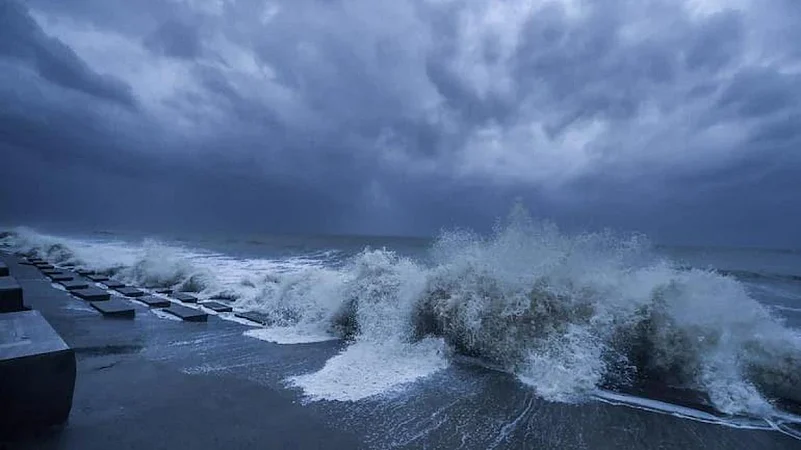The India Meteorological Department (IMD) on Thursday said a low-pressure system over the Bay of Bengal is preparing to intensify and reach Bangladesh and adjoining West Bengal coasts as a severe cyclonic storm by Sunday evening.
This is going to be the first cyclone in the Bay of Bengal in this pre-monsoon season. According to a system of naming cyclones in the Indian Ocean region, it will be named 'Remal'.
Cyclone 'Remal': What all did IMD say?
According to India Meteorological Department (IMD) scientist Monica Sharma, "The system will concentrate into a depression over central Bay of Bengal by Friday morning. It will further intensify into a cyclonic storm on Saturday morning and reach Bangladesh and the adjoining West Bengal coast as a severe cyclonic storm by Sunday evening."
As per the prediction, the cyclone is likely to reach a wind speed of 102 kilometres per hour on Sunday. Taking cognisance of the possibility, the Met departmet has warned of very heavy downpour in the coastal districts of West Bengal, north Odisha, Mizoram, Tripura, and south Manipur on May 26-27.
Fisherfolk out at sea have been advised to return to the coast and not venture into the Bay of Bengal until May 27.
Warmer sea surface, global warming: Causes behind the cyclonic storms
According to the climate scientists, warmer sea surface temperatures due to absorption of most of the excess heat from greenhouse gas emissions is the primary reason behind the rapidly intensifying cyclonic storm. As per records, the past 30 years have registered the highest sea surface temperatures since records began in 1880.
According to senior IMD scientist DS Pai, warmer sea surface temperatures mean more moisture, which is favourable for the intensification of cyclones.
Madhavan Rajeevan, former secretary of the Union Ministry of Earth Sciences, said a sea surface temperature of 27 degrees Celsius and above is needed for a low-pressure system to intensify into a cyclone. The sea surface temperature in the Bay of Bengal is around 30 degrees Celsius at present.
"The Bay of Bengal and the Arabian Sea are very warm at present, so a tropical cyclone can easily form," Rajeevan said.
However, the tropical cyclones are not solely controlled by the ocean. The atmosphere also plays a pivotal role in the intensification of cyclones through vertical wind shear. In simple words, it is defined as a change in wind speed and/or wind direction with altitude.






























